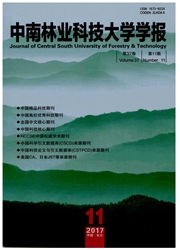

 中文摘要:
中文摘要:
根据不同植物LEAFY(LFY)同源基因序列的保守区,设计合成1对简并引物,利用该引物通过PCR技术从油桐基因组DNA中分离出1条长约1050bp的LFY同源基因(TUNGlfy)片段,克隆到pMD18-T载体,以期为进一步研究LFY基因表达特性及其与油桐成花生物学的关系打下基础.进行测序和生物信息学分析的结果表明,该片段长1059bp,在中间有1个长639bp的内含子,前面的外显子长294bp,后面的长126bp,共编码135个氨基酸,拼接位点与其它植物的LFY同源基因一致;其推导蛋白质序列与其它植物LFY同源基因的相似性为88%~97%,其中与毛白杨的相似性最高,达到了97%,推测它们具有相似的功能.
 英文摘要:
英文摘要:
Tung oil tree is a unique industrial oil-pressing plant in China. A pair of degenerate primers was designed according to the conservative regions of the floral meristem identity genes-LFAFY (LFY) homologous genes. A fragment of this homologous gcne of about 1 050 bp was amplified by polymerase chain reaction (PCR) using the pair of degenerate primers and the genomic DNA of Tung oil tree. The results suggest that a fragment of LFY homologous gene named TUNG lfy is obtained. The sequence analysis indicates that there is an intron of 639 bp, and two exons, one being 294 bp and the other 126 bp, in the fragment, and the exons encode 135 amino acids. It is also found that the homology reaches 88%-97% of the other LFY homologous gene, and especially for Populus tomentosa carr, the homology reaches the highest level (97%). This result suggests that LFY gene functions similarly as other LFY homologous gene.
 同期刊论文项目
同期刊论文项目
 同项目期刊论文
同项目期刊论文
 期刊信息
期刊信息
